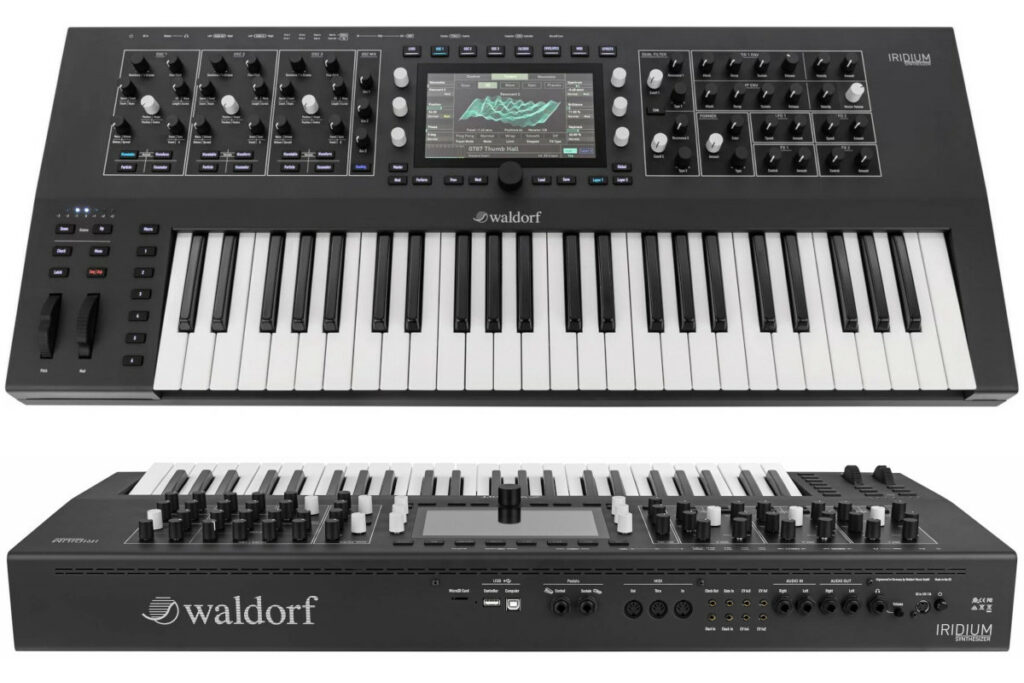
Note: This page is no longer updated as of April 2023. Though they are amazing and I highly recommend them, I no longer own Waldorf products and will not be blogging about them.
Waldorf 16 voice all-digital Iridium Keyboard
In a nutshell the Waldorf Iridium Keyboard Synthesizer is everything a Waldorf Iridium Desktop is, with a 49 key Fatar semi-weighted polyphonic aftertouch keyboard instead of the pads (which can still be accessed digitally on the touch screen).
Good move Waldorf! With the Waldorf Quantum Keyboard cruising over $5k with tax, I am sure a lot of people will elect to save $1000 and grab the 49 keys digital Iridium instead of the 61 keys hybrid analog/digital Quantum.
Personally, I’m still seeing the extra value in the Quantum, but I am certain a lot of Quantum users are going to be hoping they can replace their monophonic aftertouch keyboard with a 61 key polyphonic aftertouch keyboard.
Notably the Iridium Keyboard, like the Iridium Desktop has CV, and a little more panel real estate, and the same touch screen as the Iridium Desktop. The side panels are also reminiscent of the Iridium Desktop.
Firmware progress
Currently the newest ‘official’ firmware release is v2.8.4 which is roughly equivalent to OS 3.0 Beta 12. I would still recommend joining the Beta program (free) and updating to newer Beta versions.
Currently I am running OS 3.0 Beta 15 (Quantum), which is publicly available for Iridium/Quantum by asking Waldorf to add you to the Beta. If you are waiting for the official release of OS 3.0, don’t. OS 3.0 Beta 15 is much more stable, bug free and feature rich. There are also many great patches that require OS 3.0. There is no downside to running the Beta, none. Running OS 2.x.x massively cheats you out of the very best Iridium has to offer. Have I said this clear enough? Ha!
Thanks!
-Yehuda
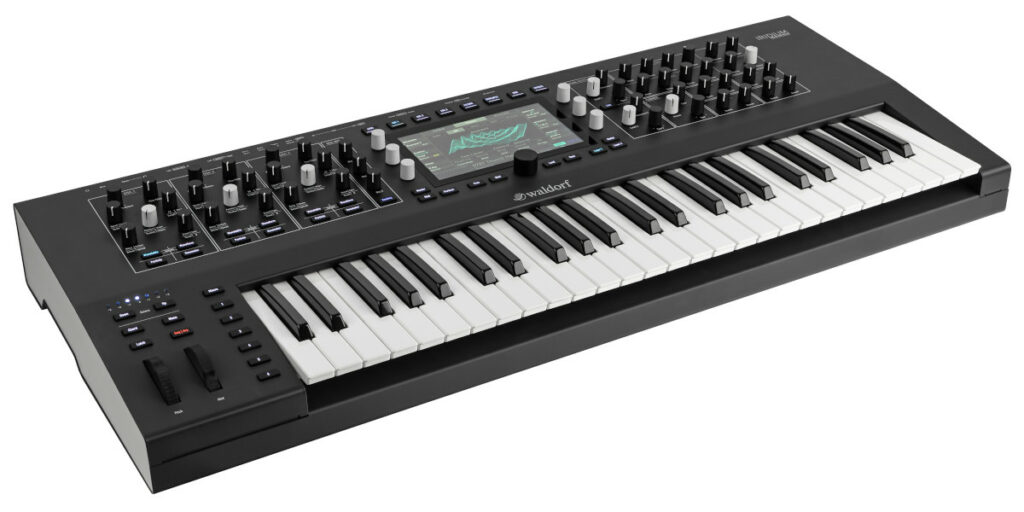
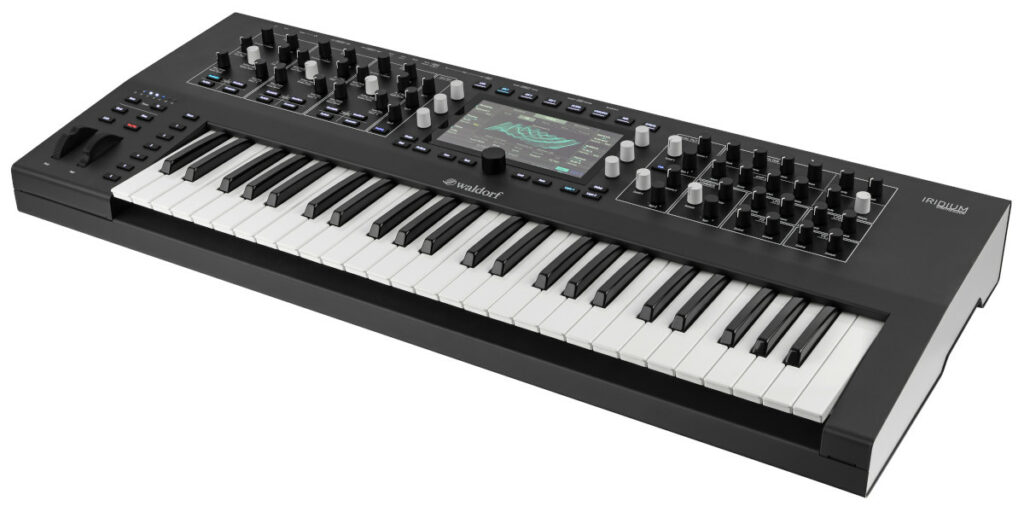
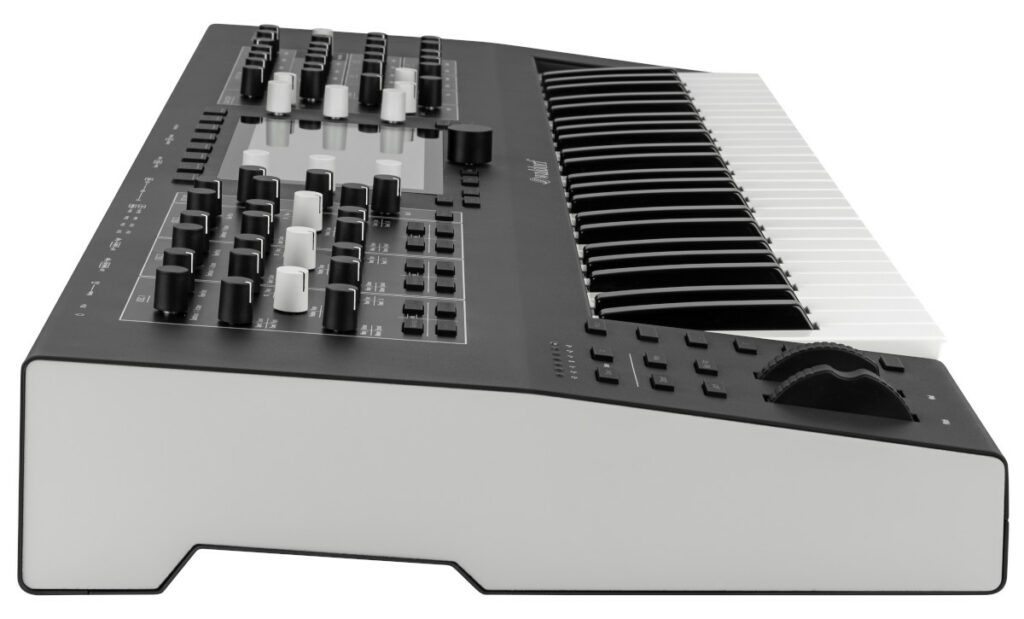
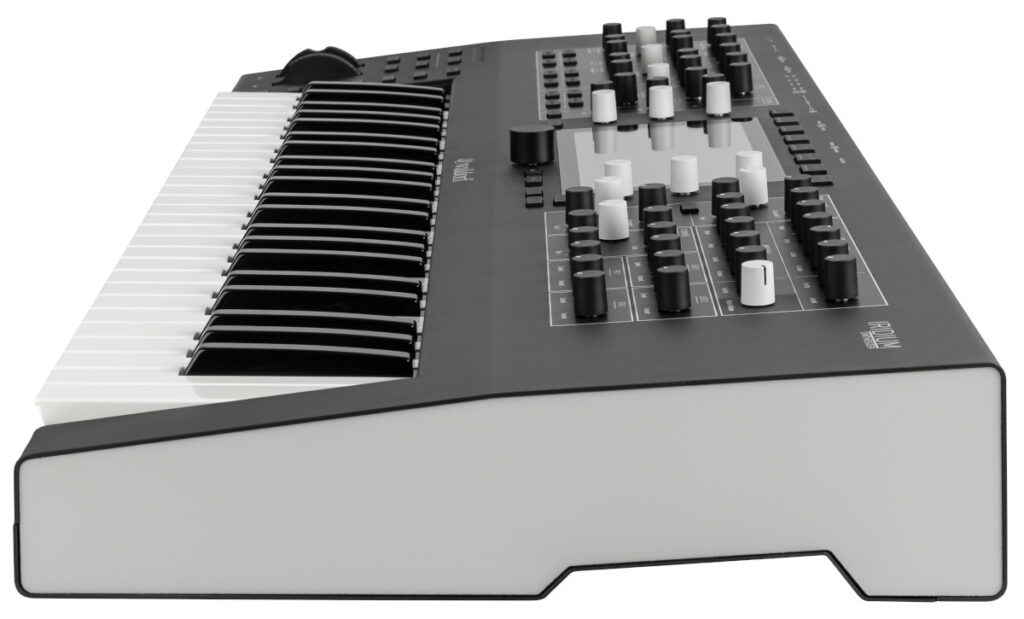

Manufacturer’s website
https://waldorfmusic.com/en/iridium-keyboard
Facebook user groups
Waldorf Quantum & Iridium Synthesizer Group
https://www.facebook.com/groups/184475775419027
Videos
Yehuda Rothschild Waldorf Iridium Keyboard YouTube Playlist
Useful Links
Apple related pages
Updated periodically – Apple Silicon is the DAW standard
Updated periodically – Apple Mac Studio M1 Max & M1 Ultra
Updated periodically – Apple MacBook Pro M2 Pro & M2 Max
Updated periodically – Apple Mac mini M2 & M2 Pro
Updated periodically – Apple M1 Processor Series
Updated periodically – Apple M2 Processor Series
Waldorf related pages
Updated periodically – Waldorf Quantum Keyboard
Updated periodically – Waldorf Iridium Keyboard
Updated periodically – Quantum Iridium Patches
Updated periodically – Quantum Iridium Wavetables & Utilities
Updated periodically – Wavetable Editing Tools
Updated periodically – Groove Synthesis 3rd Wave or Waldorf Quantum/Iridium?
Updated periodically – Sequential Prophet X or Waldorf Quantum?
Follow on Mastodon – TurtleIsland.social/@Yehuda
This page is subject to content updates/additions. If you think any content should be updated or added, please leave a private comment on Mastodon – TurtleIsland.social/@Yehuda.